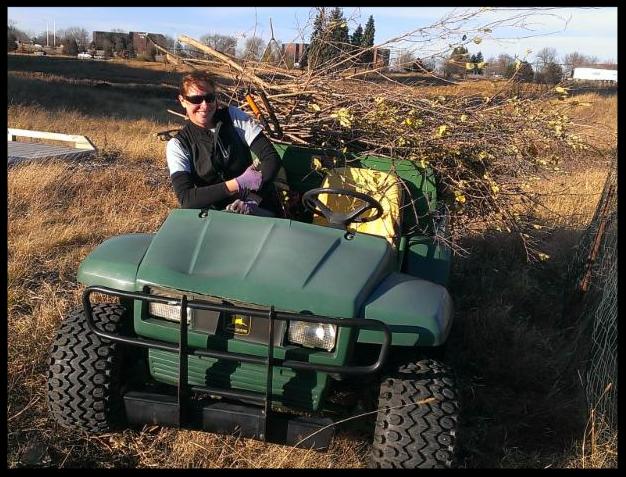Leaves are treating us to brilliant shades of orange, yellow, and rust; fall asters are blooming; shoreland plants are starting to go dormant; soon frost and the icy days of winter will be quickly approaching. Before the snow hits there are a few things you can do to put your restoration "to bed" for the season!
Did any reed canary grass sneak into your restoration this year? Fall is a great time of year to attack reed canary grass with herbicide because it is a "cool season" grass that stays green well into fall. Once native warm season plants have gone dormant, you can spray reed canary grass with a contact herbicide. Dormant plants will not take up herbicide, making it much easier to pull off effective weed control. University of Minnesota research has shown that fall treatments are most effective at controlling this invasive species.
Removing "weed" trees or invasive tree species and their
saplings is a great fall activity. You can cut and treat the
 |
|
 |
Amur Maple |
stumps with herbicide or hand-pull the smaller saplings. Green Ash, Boxelder, Mulberry, and Siberian Elm are a few weedy trees that sneak into restorations and can be removed this time of year. Amur maple is an easy non-native tree to identify this time of year from its bright fall colors. Buckthorn is also easy to identify because it keeps its leaves on long after our native trees have dropped theirs. You can spray the leaves with selected herbicides this time of year to kill the smaller buckthorn saplings. Need help removing larger stands of trees? Call us and our maintenance crew can help!

Late into the fall when temperatures have decreased dramatically, we are still conducting plant installations. Most native plants, even if they have gone dormant in the pot, will survive the winter and get an early start in the spring. Have a bare area in your restoration? Put a few plants in this fall and get a jump start on next year! Need plants? Email our Nursery Manager Jill Langer at
[email protected] for information on how to order from our wholesale nursery stock.
Now is a great time to collect seeds that have matured on your native plants. Dozens of species are going to seed in the fall and can be collected to spread in bare areas of your restoration. The seeds will overwinter on the ground and be ready to germinate in the spring.
Be lazy! Do you have the urge to cut things down and rake them out? Resist that feeling and leave the senesced material up through winter for wildlife. Many pollinators use the "dead" material for nesting and small mammals and birds use it for food and shelter. So take a load off and sit back, you're already ready for winter!